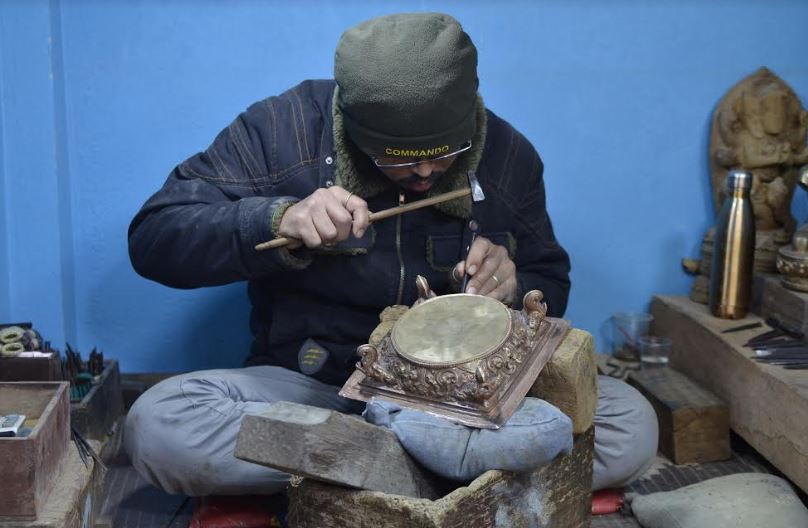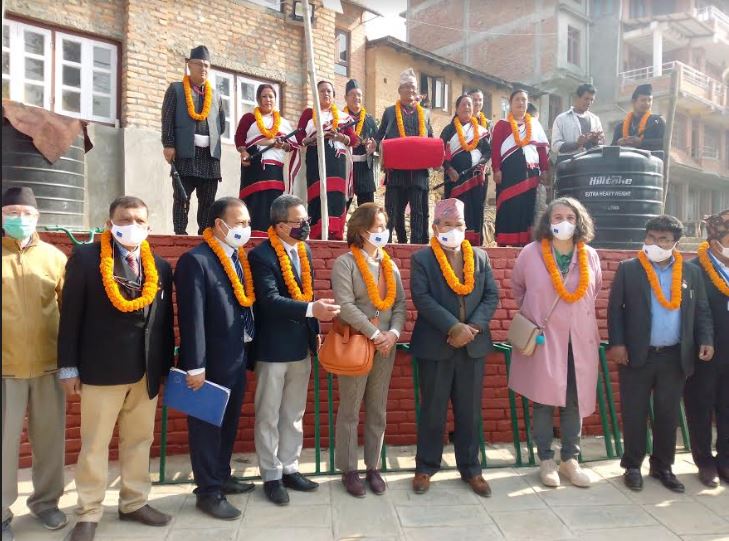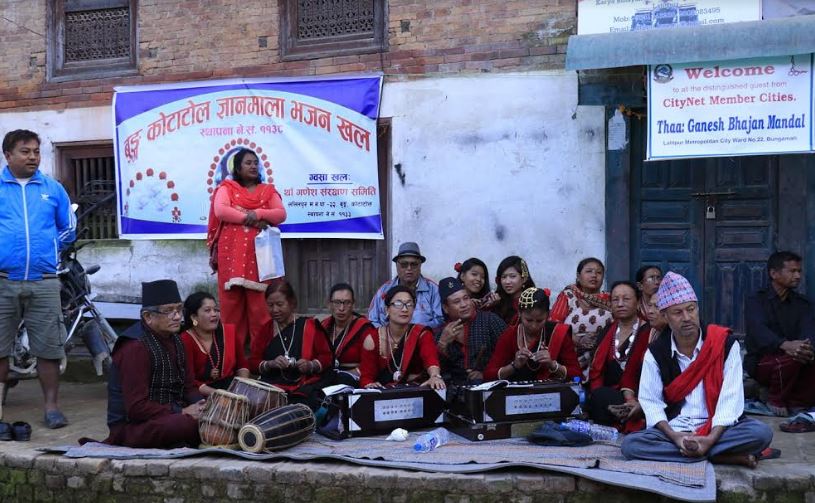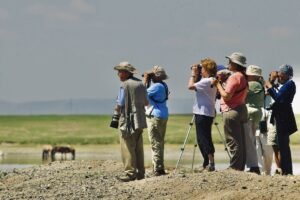Bungmati locals learning ancient craftsmanship

By Devi Panta —
The ancient art, crafts and skills are being handed over to the younger generation in Bungamati , a popular town in Lalitpur disrict of Nepal. Elderlies in Bungamati, which is popular for wooden and metal crafts, ancient musical instruments and intangible heritage like jatras, are handing over skills to newer generations.
The Eco Heritage Project which is funded by the Switch Asia intervention of the European Union is functioning as a catalyst in this generational transfer of skills. The project is also providing different self-dependent trainings to local youths.

The project for the past many years has been assisting the local youths in preservation of ancient metal and stone crafts, Newari culture, history and heritage and jatras. It is also providing different training to local youths to raise awareness about the importance of traditional skills for conservation of ancient heritage and sites of religious and cultural significance.
Many public buildings, which were being used by locals to perform religious hymns for the past hundreds of years, were damaged in the 2015 earthquakes. Locals said they had knocked the doors of different government as well as non-government agencies for restoration of these buildings, to no avail.
“These public buildings have now been restored thanks to the Eco Heritage Project,” a local said. “The project not only encouraged the younger generation to perform religious hymns but also included women by providing them with necessary training.”
According to the locals, the project has also handed over musical instruments like Tabla, Harmonium and Dhim drums to them.
Sabita Maharjan, a local youth, said the project is also helping the locals to prepare designs free of cost for restoration as well as construction of new buildings.

Maharjan, who is also associated with Namcha Pyakha Musical Group, said the project also invites the group to their programs. Saying that she learnt to play musical instruments due to the project, Maharjan shared that the involvement of women in religious musical groups has increased after the training.
“Though the project has not provided us with musical instruments or other financial assistance, they have promised us some support in the future,” she added.
According to Bidya Tuladhar, a local business person, the project has provided refrigerators and other equipment to the local people for proper promotion of ethnic Newari dishes. “The project has also been ordering ethnic dishes for programs and events organized by it,” said Tuladhar, who has been working as a caterer with the assistance of the project, shared.
Tuladhar, who is in the catering business with support of the project, said he has been preparing and supplying ethnic Newari dishes in lunch boxes after getting orders from the project and its affiliates. He added that the project has helped people involved in small businesses are now finding it easier to earn their livelihood.
Chandan Shakya, who is involved in the business of precious stones, said the project has motivated youths of the area. “Though I have not got any benefits from the project, the project is promoting local skills by providing training as well as necessary tools to local youths involved in jewelry works,” he added.
“Local youths are attracted toward precious stones and crystal business. Many of them have now become self-dependent,” he said.
Bungmati is one of the largest producers of handicraft products in Kathmandu Valley, mainly wooden crafts. Local crafts persons, who were otherwise limited to household works, are now taking it as a profession. Their economic condition and lifestyle have improved.
Shailendra Shakya, who has been involved in production of metal crafts since he was 13, said he was happy to impart metal craft skills to local youths. Though my ancestral job is wood craft, I was interested in metal craft, he added.
Shailendra has been creating different designs in singing bowls for the past many years. Foreign tourists are the major buyers of products like singing bowls. But sales have dipped these days to the COVID pandemic, he added.
Though the project was preparing a special training program on crafts, it has been halted for the past one and half years, he added.
“The fee of creating designs in singing bowls range from Rs 100 to as high as Rs 300,000,” Shailendra added. “Looking at the growing interest of local youths, I am hopeful that the project will play a key role in preserving ancient arts and crafts of Bungmati.”

Located in the southern reaches of Lalitpur, one of the three districts in the Valley, Bungmati has managed to keep Newari heritage and culture alive even today. One can still see houses built using ancient architecture in this town which seem to have no effect of modernization.
The town is of great importance in the valley also because it hosts the valley’s longest and most famous Rato Machhindranath chariot procession.
Along with providing training on preparing stone, wooden and metal crafts, the project is also renovating Dhokatini resthouse Machhindra Bahal resthouse, Pu Bihar and Depu Pokhari, as well as and building Depu Pokhari, cycle park, rest houses and Bungmati museum, among others.
5 July 2021















